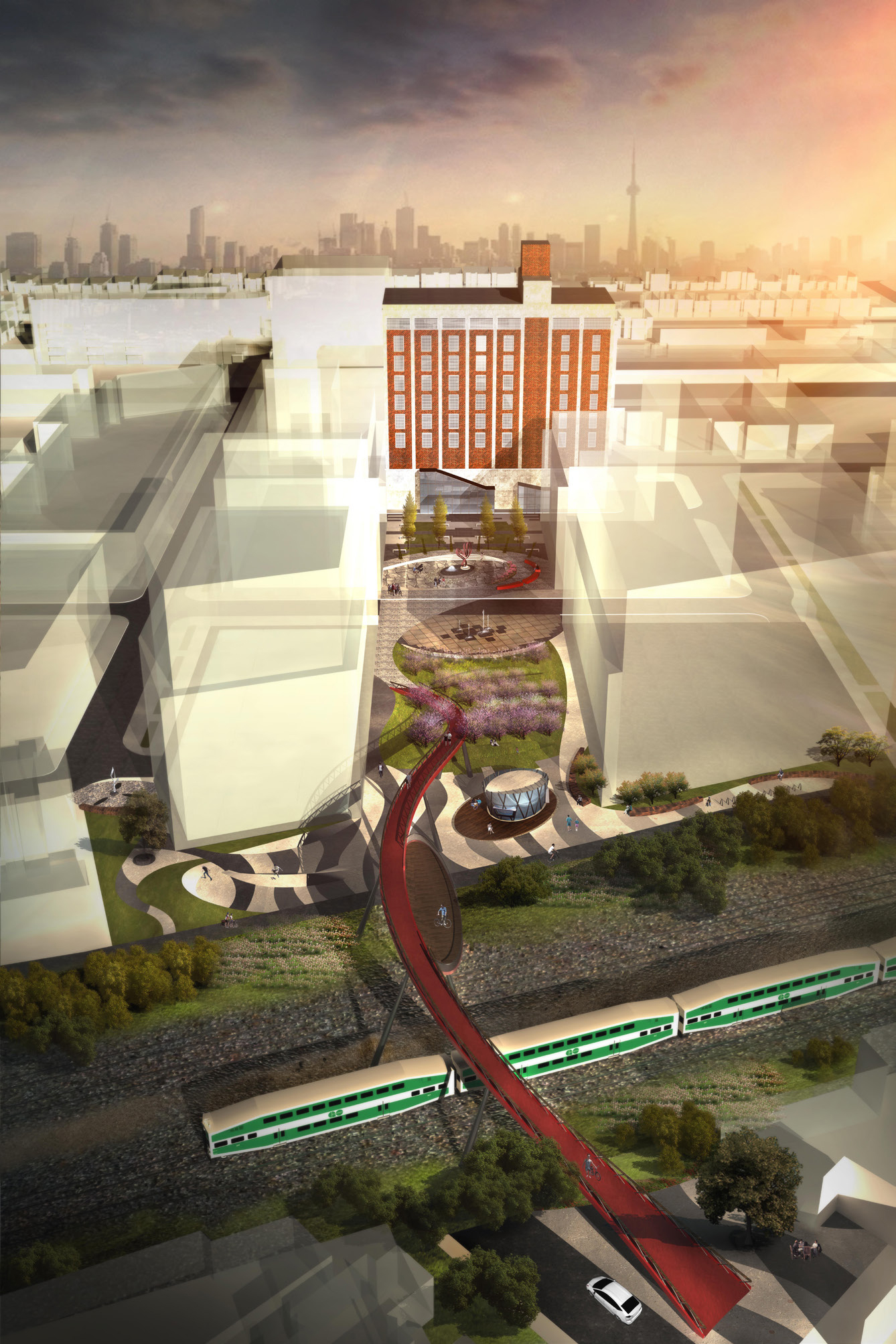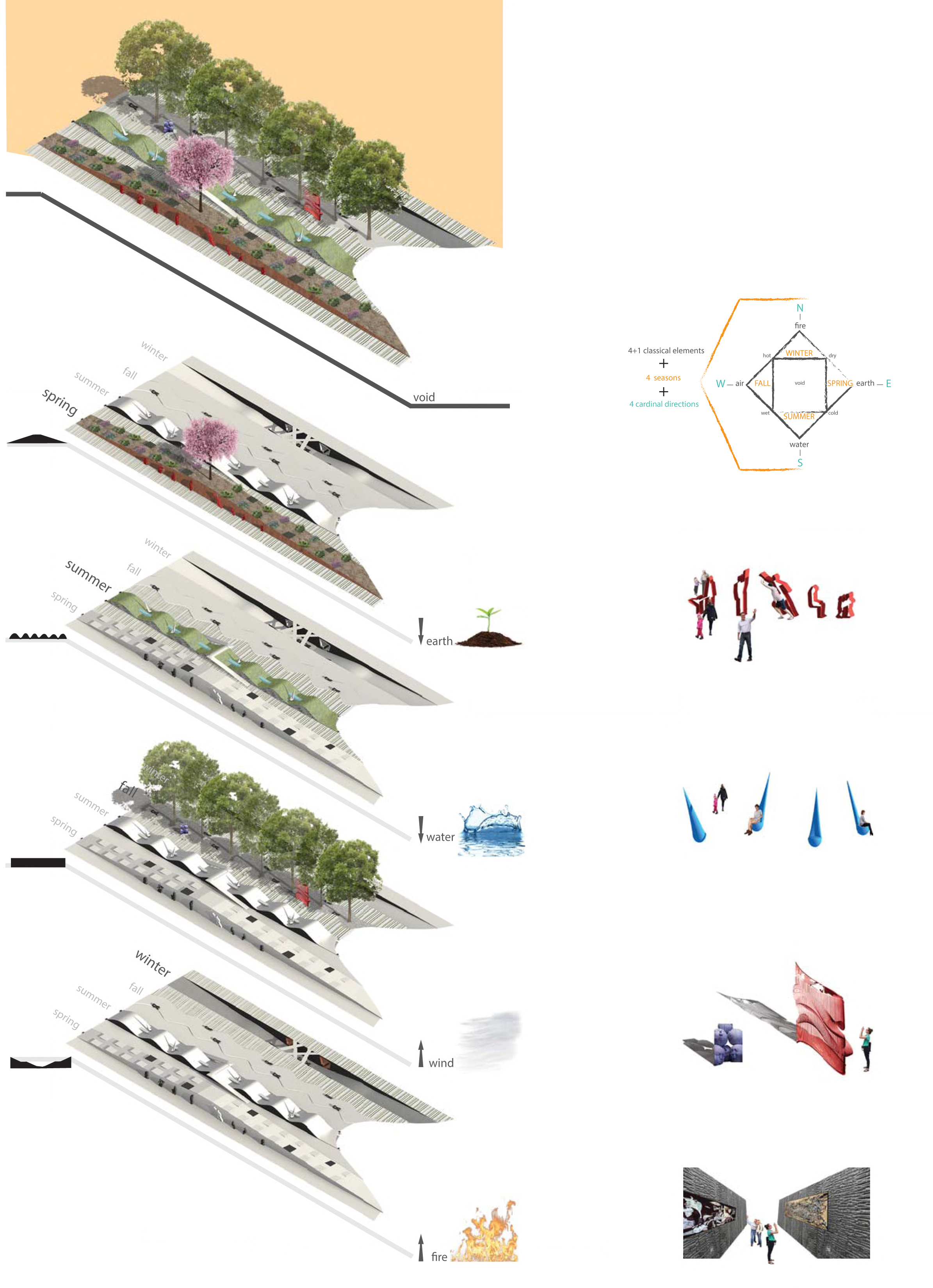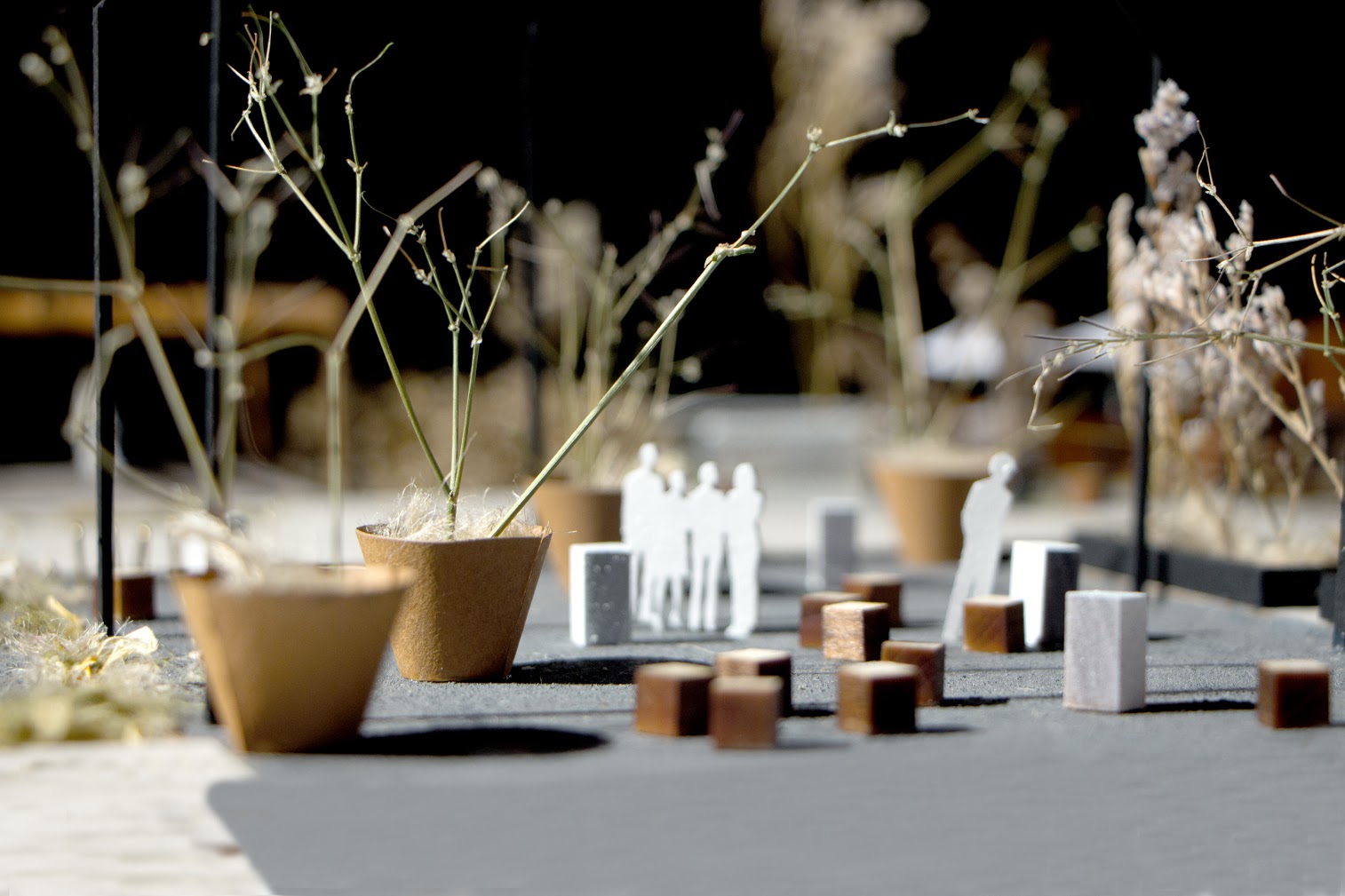
23.03.17 - Students explore the role of public art in Toronto’s Lower Junction neighbourhood
Toronto’s Lower Junction neighbourhood (Lower JCT) — in particular, an eight-acre development site about three blocks south west of Bloor Street and Lansdowne Avenue — is gearing up for big changes. The industrial brownfield site where Sterling Road bends to meet Perth Avenue just east of the West Toronto Rail Path (WTR) will soon be transformed into a mixed-used community, with the new home of the Museum of Contemporary Art Toronto Canada (MOCA) at its heart.
With the overall site development approved and implementation of key development blocks underway, graduate students from the University of Toronto’s John H. Daniels Faculty of Architecture, Landscape, and Design explored the design of the area’s open spaces including a public park and POPS (privately owned public space) that extends through the core of the development to the West Toronto Railpath. As part of her third year graduate design studio, entitled Art Site Urbanism, landscape architect and Daniels Faculty Lecturer Victoria Taylor challenged the students to take a different approach to site design research, one that focused on the important role that public art can play in “reading, understanding, and ultimately informing” the open space design.
“We studied the Land Art movement from the 60s and the work of artists currently working at the intersection of landscape architecture, architecture and public art,” says Taylor. “This research inspired an early group project that involved a series of site-specific ‘pop-up’ installations built right on the West Toronto Railpath. Engaging in the public space adjacent to the studio site gave the students a new confidence and interest in seizing the opportunity to contribute to the conversation about the design of the new neighbourhood.”
Castlepoint Numa, together with Greybrook Realty Partners, is leading the site’s transformation, which is expected to bring 1,000 new residents and 3,500 jobs to the area, as well as new community amenities, including over an acre of new parks and open spaces, affordable housing, and a new day care facility. MOCA’s new home on Sterling Road is now under construction in the heritage-designated Tower Automotive building, which is being restored and preserved by architectsAlliance.
“I was extremely interested in the diverse social context surrounding the site,” said Master of Architecture student Karima Peermohammad. “The park will be immediately surrounded by residential, light industrial, commercial, rail path, and of course cultural uses.”

Karima Peermohamed's proposal Perth Collective explores a mix of ecology, residential, employment, and museum spaces
Peermohamed’s proposal focused on extending these uses to the open space surrounding the buildings through careful consideration of scale, boundaries and textures. Her plan incorporates opportunities for social interaction among a diverse group of users.
In a neighbourhood that already attracts artists and gallery-goers alike, taking a more interdisciplinary approach to the design of the community’s shared open spaces and using public art as (as Peermohammad describes it) a lens through which to better engage with and understand the site provides designers with a greater set of tools to develop their creative vision. It’s an approach that has become more common in Toronto since 2008, when the City mandated that public art be included the development process.
As part of their early course research, the students explored public art projects in Toronto and Cleveland, including LANDstudio, a firm that specializes in public art, collaborative planning, programming and sustainable building design.
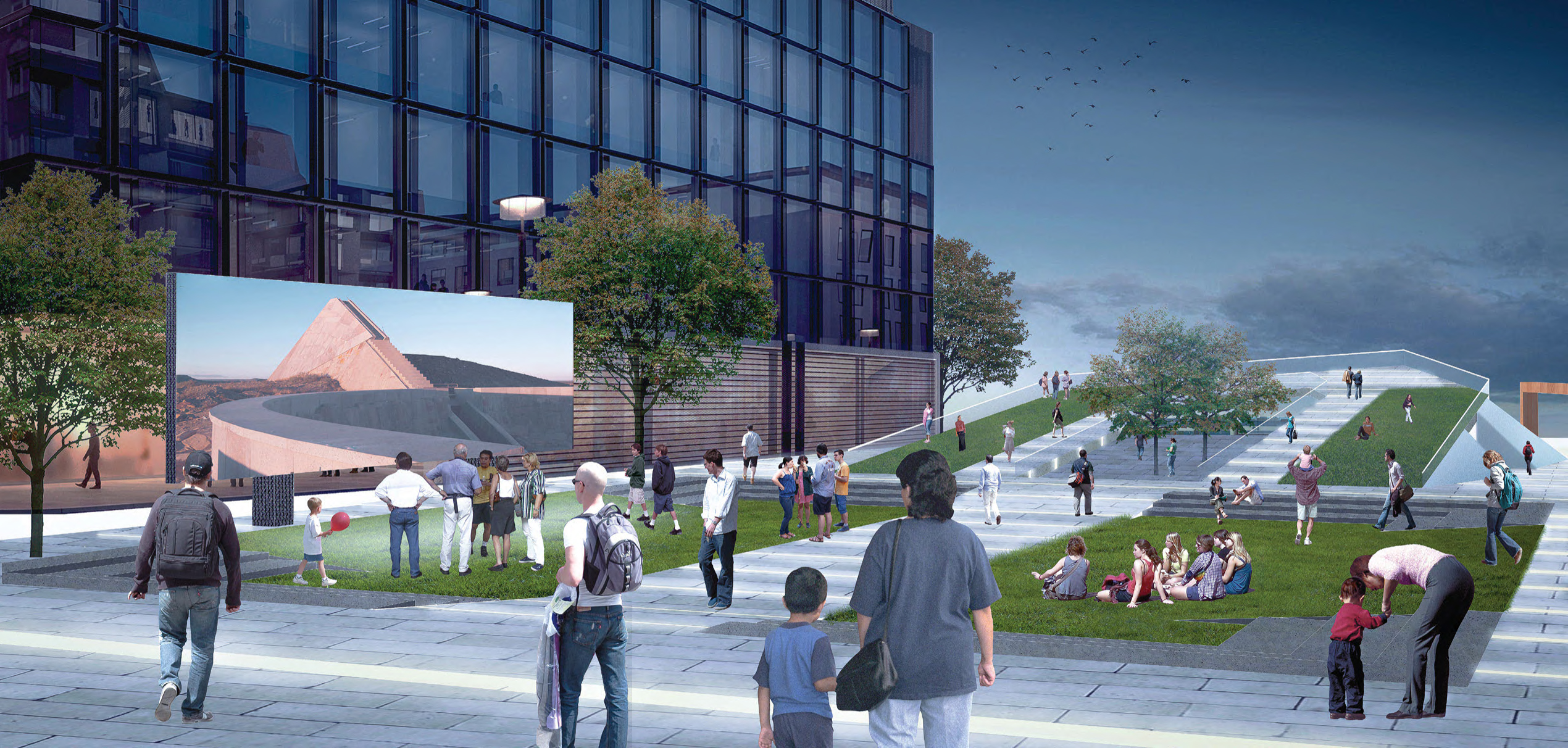
'Scape Canvas by Tom Kwok
For his final project, Master of Landscape Architecture student Tom Kwok proposed creating opportunities to bring art from inside MOCA outdoors. In his design, the park became a “canvas” where public art, including projections, interactive art, and performance, can be displayed. He says one of his goals was to create an art and cultural destination in Toronto, using landscape architecture to complement MOCA’s activities and programing.
“I enjoyed designing for a site that is simultaneously in real life development,” says Kwok. “It was exciting to know that our work will attract interest from stakeholders.”
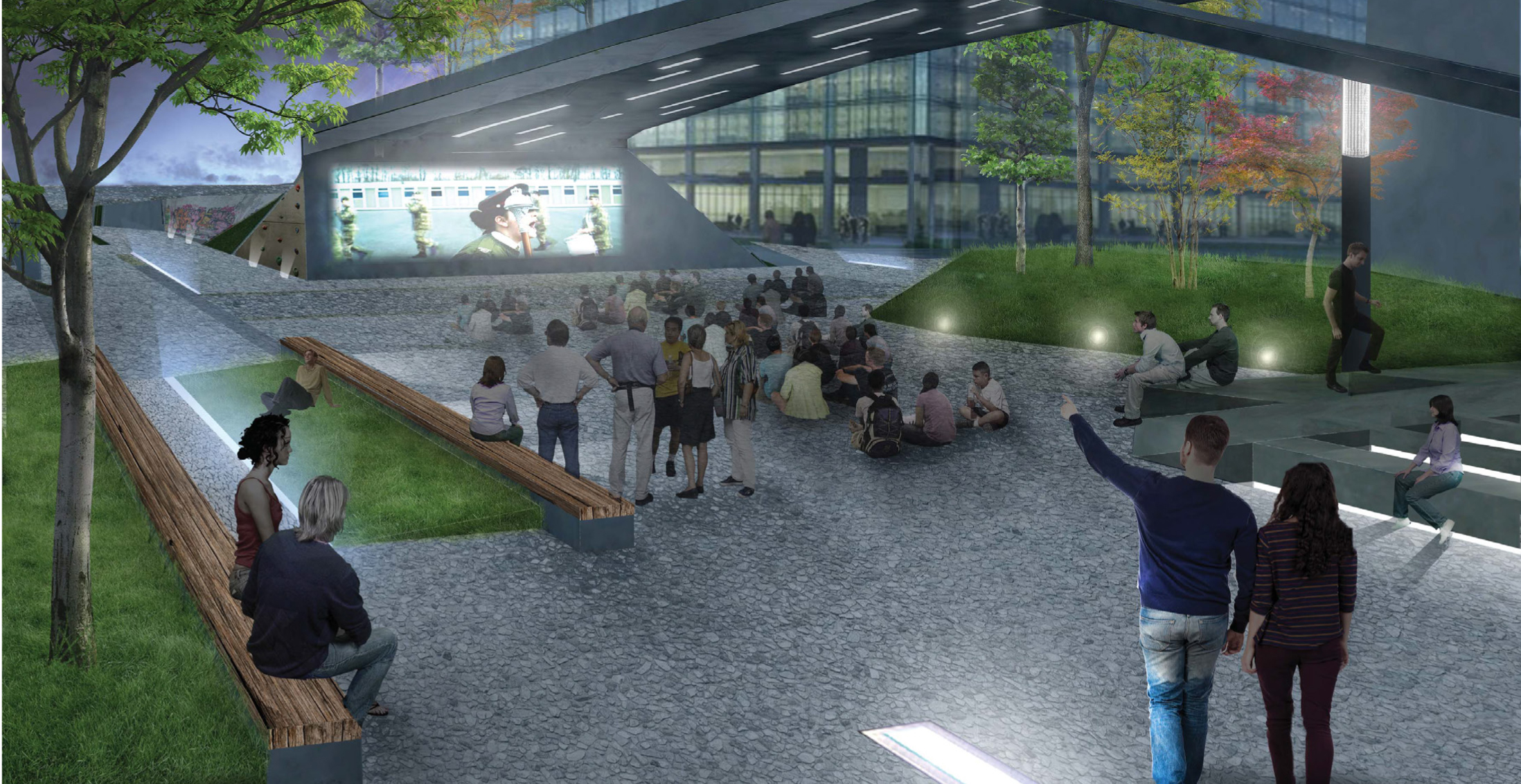
Artistic Influx by Shaine Wong
Renderings by Master of Landscape Architecture student Shaine Wong show water flowing through a portion of the park, which would become a skating rink in the winter. An earth bridge extending from MOCA’s entrance would provide a sheltered area for programming, while a pathway through the park would connect to the West Toronto Railpath.
In February, Taylor, with support from Castlepoint Numa and Greybrook Realty Partners, held an exhibition of the student’s work at the developer’s gallery space on Sterling Road. The event gave neighbours, MOCA members, railpath advocates, and others the opportunity to view the ideas generated in the studio.
"The work presented by the students demonstrated a very thoughtful design process that responded to the complexity and opportunities of the site,” said Alejandra Perdomo, Planner/Development Coordinator at Castelpoint Numa. “We are very happy that the Lower Junction could provide a hands-on educational opportunity for students and future designers"
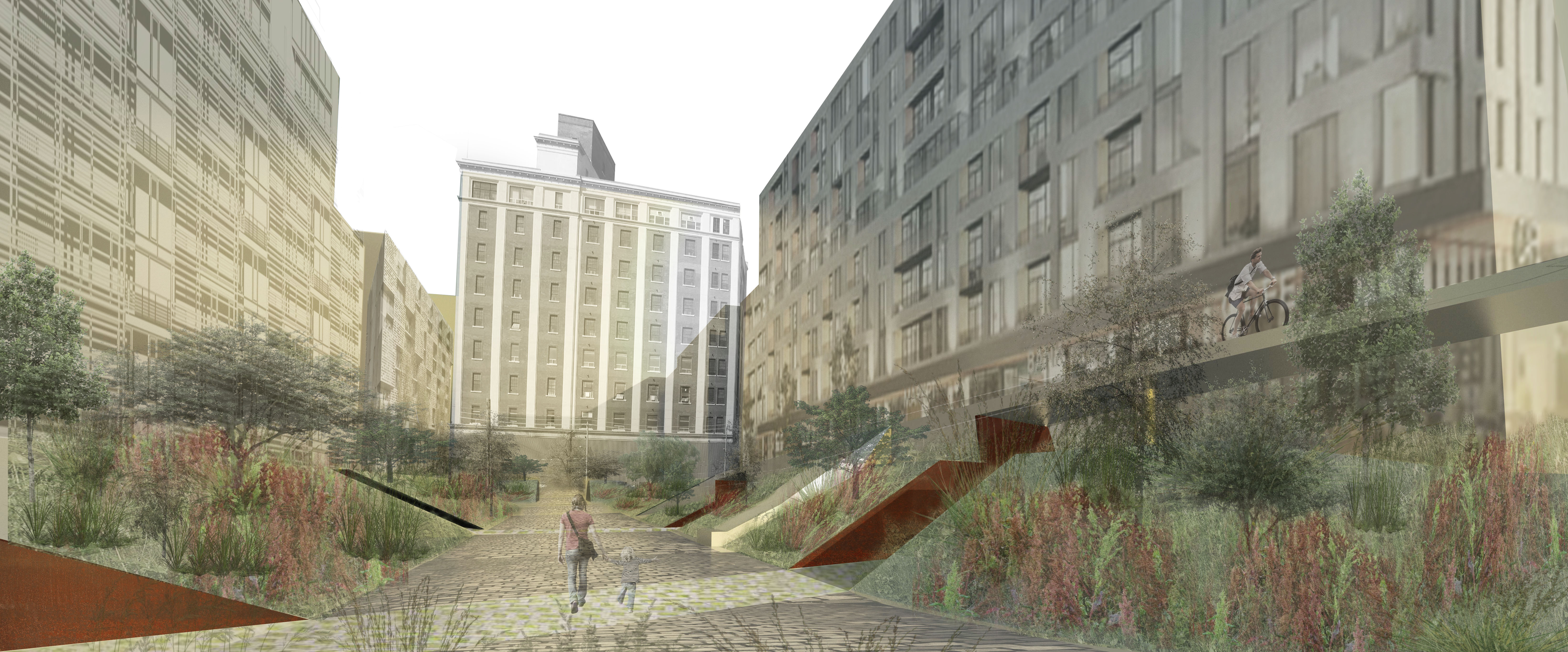
Chainlink, by Noah McGillivray
For the students, the exhibition was an unique opportunity to appreciate the possible impact of their work beyond the studio’s Final Reviews.
“The experience was very rewarding,” said Wong. “We received a lot of positive feedback. And it’s exciting to know that our projects could possible play a role in the future design of the site.”
Representatives from the City of Toronto Planning and Parks department, Castlepoint Numa, MOCA, and Toronto’s design and arts community worked with the students, providing feedback on their ideas throughout the term.
David Liss, Artistic Director and Curator at MOCA, noted how important it was for the students to understand the site and surrounding context.
“[The students] challenged their imaginations and, to some extent, even challenged the nature of the site, which I thought was great, rather than totally give in to expectations and predictable solutions,” he said. “They made the most of an unusual opportunity to wrap their imaginations around a very relevant 'real world' situation: how to examine and create engaging social space within the context of urban intensification in a rapidly evolving city.”
1. Transition Node, by Yusong Li 2. Play(ed)ground, by Sébastien Beauregard 3. Art in Four Seasons, Landscape in Four Elements, by Shahrzad Khatami


